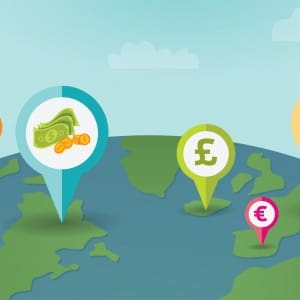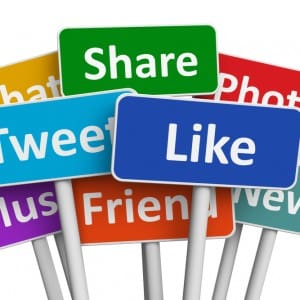Topics
Using Gamification To Drive Partner Loyalty And Sales

An increasing number of organizations are recognizing the value of gamification in driving customer and employee engagement. In fact, research from Gartner has indicated that by 2015, 70% of Global 2000 organizations will use gamification in some way.
Vendors, brands and manufacturers can leverage gamification as a tool and inherent business strategy to drive efficiency and performance across their sales channels. By leveraging tools and strategies such as leaderboards, points and badges, organizations can drive participation and even healthy competition across partner networks.
For example, gaming strategies can be applied to training and certification for channel sales teams, according to Chandar Pattabhiram, VP of Worldwide Marketing at Badgeville. The company helps Fortune 1000 companies incorporate gamification into partner engagement and loyalty practices.
“Channel sales teams continuously need to be trained and certified on new products, but ensuring that all partners participate and digest the message can be a challenge, especially in a large enterprise,” Pattabhiram said in an interview with Channel Marketer Report. “Gamification enables tracking and measurement of behaviors, such as downloading a data sheet or completing a quiz, and also provides levers to influence those behaviors.”
Pattabhiram spotlighted three types of mechanics that are used in B2B and channel environments:
- Game mechanics, which guide team members and help them complete specific tasks or actions;
- Reputation mechanics, such as titles, to incent behaviors; and
- Social mechanics to provide context and drive awareness.
Technology is playing a more integral role in personal lives and corporate communications. As a result, new tools and solutions will continue to develop, making gamification initiatives easier to execute and maintain for organizations.
“Gamification is on the rise, and technology advancements in this area will continue to be a driving force behind increased adoption,” said Scott Broomfield, General Manager for the SMB division of Xactly. “Cutting-edge technology, such as social media, mobility and the cloud, will extend gamification broadly to more companies and more people.”
Rolling Out Gamification In A Channel Environment
Organizations are recognizing the potential value of gamification, especially in regards to keeping partners engaged and connected on new training, certification, and sales opportunities.
Gamification tools and solutions can be integrated into existing systems, such as partner portals and even CRM systems. For example, apps such as Badgeville for Salesforce allow vendors and manufacturers to incorporate contests and gamified notifications into existing systems and “give the channel a constant reminder of what is at stake if they close a certain number of deals, or close more valuable deals,” Broomfield said. “Keeping leaderboards and standings refreshed with current information and stats is critical.”
The alignment between gamification and improved engagement as well as channel-wide performance is becoming more evident. In fact, the engagement opportunity is especially clear among workers in younger age segments, Broomfield explained. “The latest generation of workers was raised with a Nintendo controller in hand. Moreover, Generation Y is very much in tune with rewards and badges as a driving factor in motivation.”
Yet a recent study released by Gartner has warned that by 2014, 80% of all current gamified applications will fail to meet business objectives, primarily due to poor design.
To facilitate gamification, “organizations must first clearly define the desired end goal, and then work backwards to determine whom they want to motivate and what they’re offering,” Broomfield advised. “In sales, this could be increased rewards for selling in a team environment or increasing a contract from one year to two.”
Vendors, brands and manufacturers also must complete the following tasks before rolling out a gamification program or solution, according to Broomfield:
- Research target and current partners;
- Understand online behaviors, including social networks they frequent; and
- Identify prizes or incentives that will entice them.
“Like any program, gamification must be implemented in a focused and strategic manner,” Broomfield noted. For example, the company initially launched its Friends of Xactly (FOX) program in a limited beta, starting with customers the company works with closely, he explained. FOX provides Xactly advocates with a variety of incentives and rewards for supporting marketing campaigns. “Once we had initial results and a better understanding of what worked, we began to publicize it more broadly on our social networks, web site, customer newsletters, and through other channels.”
Identifying And Tackling Potential Obstacles
Incorporating gamification tools and strategies into channel sales practices can help organizations drive measurable results. However, fear of lackluster adoption for these gamification tools and solutions is hindering investment.
To ensure participation in gamification initiatives, organizations must “embed it smartly into whatever existing methods organizations use to communicate with their channel,” according to Pattabhiram.
For example, Badgeville APIs and widgets allow companies to create new users from an email, embed leaderboards and missions into existing portals, and deliver real-time notifications via a Javascript layer.
“Channel organizations typically have a large network of partners with common goals, but divergent priorities and incentives,” Pattabhiram said. “Game mechanics such as missions or tracks align corporate goals with channel priorities, nudging partners to complete tasks, including logging sales and claims more quickly and efficiently. Furthermore, since channel partners often exist in their own domain, giving them a sense of community and context via leaderboards, activity streams and real-time notifications about how peers are performing can motivate additional high-value behaviors.”
But overall, channel-wide acceptance and usage of gamification relies mostly on a vendor, brand or manufacturer’s ability to educate partners on rewards, and how they align with specific challenges or tasks that need to be completed.
“The best way to motivate your channel is by making sure the rewards are front and center with real-time updates,” Broomfield said. “People need to clearly understand the goal and what they need to do to get there — or organizations will never achieve their desired end result.”














